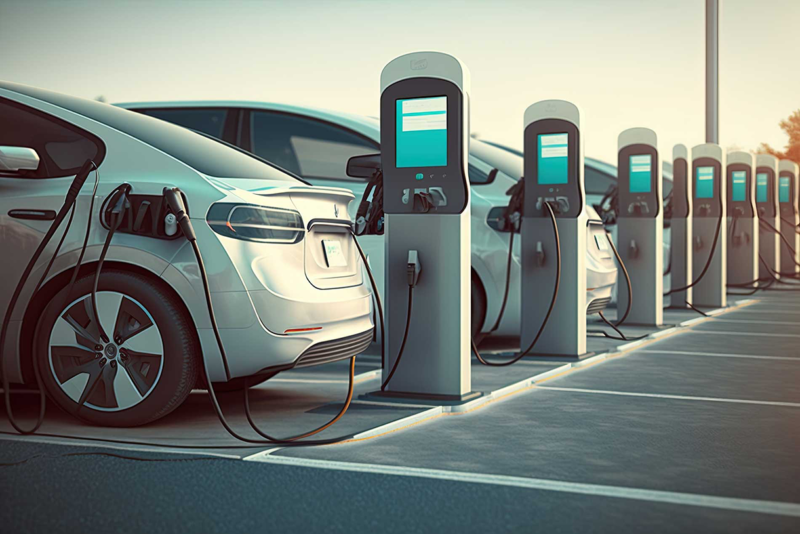Electric Vehicles in 2024: Trends and Challenges Shaping the Future of Mobility
October 12, 2024

Electric vehicles (EVs) are no longer the technology of tomorrow; they are the driving force of today’s automotive industry. As we enter 2024, the EV landscape is transforming rapidly, with advancements in battery technology, charging infrastructure, and government policies accelerating the shift towards a more sustainable future. This article explores the key trends and challenges shaping the EV industry this year, providing insights into how these developments will impact consumers, manufacturers, and policymakers.
Advancements in Battery Technology
The heart of any electric vehicle is its battery, and advancements in battery technology continue to be a critical factor in the evolution of EVs. In 2024, we’re seeing significant progress in solid-state batteries, which promise to deliver higher energy densities, faster charging times, and enhanced safety compared to traditional lithium-ion batteries. Companies like Toyota and QuantumScape are pushing the envelope, aiming to bring solid-state batteries to market within the next few years.
Another key development is the increasing focus on sustainable battery materials. Manufacturers are exploring alternatives to cobalt, which is both costly and ethically challenging to source, and turning to materials like lithium iron phosphate (LFP) and sodium-ion, which are cheaper and more environmentally friendly. These innovations are set to make EVs more affordable and accessible, further driving consumer adoption.
Expansion of Charging Infrastructure
While EV adoption is on the rise, one of the biggest challenges remains the availability of charging infrastructure. In 2024, significant investments are being made to expand the network of charging stations, with both public and private entities playing crucial roles. Governments worldwide are providing incentives to install more charging stations, while companies like Tesla, ChargePoint, and Electrify America are rolling out ultra-fast chargers that can recharge EVs in minutes rather than hours.
The growth of residential and workplace charging options is also reshaping how consumers view EV ownership. Innovations such as wireless charging and bidirectional chargers, which allow EVs to return energy to the grid, are enhancing convenience and helping to stabilize the energy grid. As charging infrastructure becomes more widespread, range anxiety—the fear of running out of power—will continue to diminish, making EVs an even more appealing option for everyday drivers.
Increased Range and Affordability of Electric Vehicles
Range has been a critical consideration for potential EV buyers, and in 2024, electric vehicles offer more miles per charge than ever before. The latest EV models can achieve ranges of over 400 miles on a single charge, with luxury models like the Lucid Air setting new benchmarks for distance. Even budget-friendly models, such as those from Hyundai and Nissan, are now offering ranges that meet the needs of most drivers, further broadening the market for EVs.
Affordability is also improving as production costs decrease and more competitive models enter the market. EVs are increasingly being priced on par with gasoline vehicles, especially as government subsidies, tax credits, and incentives lower the effective cost for consumers. Furthermore, many countries are introducing policies that penalize fossil fuel vehicles, making EVs not only a greener choice but also a more economically viable one.
Growth of EV Models Across Vehicle Segments
The EV market has traditionally been dominated by sedans and compact cars, but in 2024, the variety of EV models is expanding to include a broader range of vehicle types. We’re seeing an influx of electric trucks, SUVs, and even motorcycles, catering to diverse consumer preferences and needs. The arrival of electric trucks like the Ford F-150 Lightning and Rivian R1T is especially notable, as it brings EVs into the mainstream of utility and recreational vehicles.
Electric SUVs continue to be popular due to their versatility, with models like the Tesla Model Y, Audi Q4 e-tron, and Kia EV9 appealing to families and adventurers alike. The development of EVs across all segments is reshaping the automotive landscape, making it easier for consumers to find an electric vehicle that fits their lifestyle.
Autonomous Driving and Integration with EVs
Autonomous driving technology and EVs are two parallel trends that are increasingly converging. Many new EVs are equipped with advanced driver-assistance systems (ADAS) and semi-autonomous features that make driving safer and more convenient. In 2024, major automakers like Tesla, GM, and Ford are making strides toward full autonomy, with electric vehicles serving as the platform for testing and deploying these technologies.
The integration of autonomous capabilities with EVs promises to revolutionize transportation, particularly in urban areas. Self-driving EV fleets could reduce traffic congestion, lower emissions, and provide new mobility solutions for those who cannot drive. However, regulatory hurdles and technological challenges remain, meaning fully autonomous EVs may still be a few years away from becoming a common sight on the roads.
Government Policies and Incentives Supporting EV Adoption
Governments around the world are playing a pivotal role in promoting EV adoption. In 2024, countries continue to introduce policies aimed at reducing carbon emissions, with many setting ambitious targets to phase out internal combustion engine vehicles within the next decade. Incentives like tax credits, rebates, and subsidies make EVs more affordable, while stricter emissions regulations encourage automakers to accelerate their shift to electric models.
Additionally, some regions are implementing zero-emission zones, where only EVs are permitted, and investing in green energy infrastructure to support sustainable charging. As policymakers double down on their commitment to clean energy, these initiatives will drive EV adoption and contribute to a more sustainable transportation future.
Challenges Facing the EV Industry in 2024
- Battery Supply Chain and Resource Scarcity
While battery technology is advancing, the industry faces challenges related to the supply chain and availability of raw materials. Lithium, nickel, and cobalt are essential for EV batteries, and demand is outpacing supply. Mining these resources can also have significant environmental and social impacts. The industry is seeking alternatives, but scaling up new materials will take time and investment. - Charging Infrastructure Gaps in Rural Areas
Urban centers are seeing rapid growth in charging infrastructure, but rural areas often lag behind. The lack of charging stations in these regions can limit EV adoption, particularly for those who live in or frequently travel through rural areas. Addressing this disparity is crucial for achieving widespread EV adoption and ensuring equitable access to sustainable transportation. - High Initial Costs and Consumer Hesitancy
Despite the progress in making EVs more affordable, the initial purchase price can still be a barrier for some consumers. While EVs offer savings on fuel and maintenance over time, the upfront cost is often higher than that of traditional vehicles. Educating consumers about the long-term financial benefits and providing more financing options can help alleviate this concern.
Conclusion
As we navigate 2024, the electric vehicle industry stands at a pivotal juncture. Advancements in technology, expanded model options, and supportive government policies are accelerating the transition to electric mobility. However, challenges such as infrastructure gaps, resource scarcity, and consumer hesitancy must be addressed to ensure a sustainable and inclusive EV future.
The road ahead for electric vehicles is promising, with innovation driving the industry forward. As manufacturers, consumers, and governments work together to overcome obstacles, EVs will play a central role in creating a cleaner, greener, and more efficient transportation ecosystem. The future of mobility is electric, and 2024 is set to be a defining year in the journey toward widespread EV adoption.




